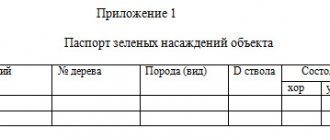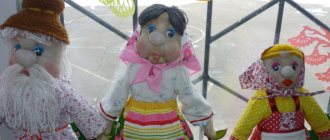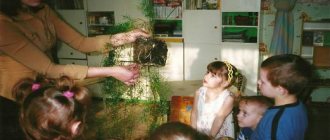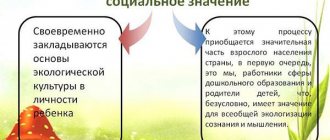Environmental education of preschool children in various activities
Mikhailina Yulia Mikhailovna
Environmental education of preschool children in various activities
Environmental education is the formation in a person of a conscious perception of the natural environment, the conviction of the need for a careful attitude towards nature, the wise use of its wealth and natural resources.
The relevance of this topic lies in the fact that environmental upbringing and education of children is an extremely important problem of the present time: only the ecological worldview and ecological culture of living people can lead the planet and humanity out of the state in which it is now.
The goal of environmental education of preschool children is to form in them the foundations of environmental consciousness and environmental culture .
Objectives of environmental education :
1. Formation of basic environmental knowledge accessible to the child’s understanding.
2. Formation of skills and abilities to observe natural objects and phenomena.
3. Fostering a humane , careful, caring attitude towards the natural world, and the surrounding world in general, developing a feeling for natural objects.
The main directions of work of preschool educational institutions on environmental education :
educational and entertaining; practical; research; environmental protection
The problem of environmental education today worries scientists, teachers, and the public. It is necessary to cultivate in children a consciously correct attitude towards nature, which is considered not only as a body of environmental knowledge , but also as an effective activity with their participation . The active position of children is an indicator of the degree of environmental education and culture of the younger generation.
I believe that environmental education should be given an important place. I am sure that love for nature and respect for it should be cultivated both in the family and in preschool educational institutions. The process of educating an environmental culture can be successful if it is carried out continuously, starting from preschool age .
Preschool childhood is a valuable stage in the formation of a child’s personality and the development of a person’s ecological culture . At this age, the child develops an emotional and value-based attitude towards the environment, the foundations of the moral and ecological positions of the individual , which are manifested in the child’s interactions with nature.
Environmental education in my group is organized in such a way that it fits organically into the daily life of children: interaction with nature takes place not only in classes, but also through other types of activities at different scheduled moments.
I use a variety of methods, which I choose depending on the educational objectives, program material and age of the children. This contributes to the greatest success in children's mastery of educational material and sustainable interest in their activities .
Methods I use:
visual (observation, demonstration)
;
practical (game, work)
;
verbal (stories from the teacher , reading works of fiction, conversations);
experimental (experience)
.
In the process of environmental education I use the following activities :
Game activity . In the life of preschool , play is a leading activity . The game helps to develop a positive attitude towards the natural environment, children show sympathy, help everyone in need of help, take care of the flora and fauna, perceive the beauty of nature , learn to preserve and take care of what surrounds them. I use different types of games:
Didactic games, board-printed games (paired pictures, lotto,
domino).
Word games develop coherent speech, attention, intelligence,
speed of reaction.
Outdoor games help consolidate knowledge about animals, their habits,
reflect the phenomenon of living and non-living nature.
Role-playing games with natural content. With the help of role-playing games on an environmental theme, I try to evoke an emotional response in children and influence the formation of the correct attitude towards objects of the flora and fauna.
Construction and construction games - in them children reflect their knowledge and
impressions about the surrounding objective world.
Motor activity . While performing physical exercises, children observe natural phenomena and seasonal changes. I use: breathing exercises, general developmental exercises, outdoor games, relay races, seasonal sports exercises.
Communication activities and reading fiction. Children's fiction about nature teaches the child to express his opinion and voice his feelings. In my work I widely use reading stories, poems, works of Russian folklore (fairy tales, proverbs, sayings, riddles)
.
Visual activity . Fine art reveals the beauty of a person’s inner world so that he sees the beauty of the surrounding reality and wants to “create”
her himself.
Work. In the process of working in nature, children learn to establish a relationship between the habitat, the way of life of an animal in nature and ways of caring for it in a corner of nature.
The most significant method of environmental education of children is observation. With its help, children get acquainted with the external signs of natural objects and learn their connections with the environment. Observations form the basis of various types of activities and are used as a component during conversations, walks, excursions, and mini gardens.
Also in the group I conduct various competitions, conversations, consultations with parents on environmental education . Every year we hold the “Feed the Birds in Winter”
.
Thus, interacting with the natural environment, the child is an active subject. Through environmental and other types of activities , the child gains useful personal experience, feels his own opportunity to explore the world and interact with it, the child will love, appreciate and take care of the surrounding nature all his life, passing on his knowledge and skills to next generations.
Literature
1. Bukin A.P. In friendship with people and nature. M.: Education, 2009.
2. Nikolaeva S. N. Methods of environmental education of preschool children Proc . aid for students avg. ped. textbook establishments. — 2nd ed., rev. — M.: Publishing House
, 2001.
3. From birth to school. Basic general education program for preschool education / Ed. N. E. Veraksy, T. S. Komarova, M. A. Vasilyeva. - M.: MOSAIC-SYNTHESIS.
4. Ryzhova N. A. Environmental education in kindergarten. M.: Karapuz, 2000.
5. Internet source.
MAGAZINE Preschooler.RF
Article “Environmental education of preschool children”MUNICIPAL AUTONOMOUS PRE-SCHOOL EDUCATIONAL INSTITUTION KINDERGARTEN OF GENERAL DEVELOPMENTAL TYPE No. 48, TOMSK (MADOU No. 48)
Author: Nevedimova Ekaterina Yurievna
The article “Environmental education of preschool children” was created for teachers of preschool educational institutions. This article discusses the issue of environmental education of preschool children in preschool educational institutions. What should you pay attention to in the development of environmental education? Through what directions should work on environmental education be carried out? What forms and methods of work to use when working with children and parents.
Creation date October 4, 2022.
Man and nature are closely interconnected. The human impact on the environment is on a global scale. Environmental problems are becoming the content of pedagogical programs in many countries. In the environmental education of preschool children, the main emphasis is on the fact that it is humans who are responsible for the pollution of nature and the extinction of many animal species. What is happening in society now? Adults behave as consumers in relation to nature, without thinking about what consequences there may be. A caring attitude towards nature should be cultivated from early childhood. A child who perceives the beauty of the world around him develops a feeling of attachment to the place where he lives, a desire to protect it, which will later lead to the love of his Motherland. This is the goal of environmental education, to instill love for the Motherland, for the native land. Children learn to respect all living things. As adults, children will be the real masters of their land, not only spending its resources, but also preserving and increasing it.
Taking into account the Federal State Educational Standard, the task that preschool pedagogy solves is the formation of the pupil as an integral, highly moral person. Only those who truly love their land and are devoted to their native land will become a true patriot.
Now the approach to environmental education has changed. Simple familiarization of children with natural phenomena has changed to environmental education. According to the Federal State Educational Standard, environmental education of preschool children is one of the components of the entire educational process. It not only develops thinking and speech, promotes the development of the emotional sphere, but also lays the foundations of morality and influences the development of the child’s personality as a whole.
The foundation laid in childhood will be the foundation of ecological culture. The child will develop a value system.
Environmental education involves work in the following areas:
- Educational direction.
- Developmental direction.
- Educational direction.
The main goal of environmental education is to form the foundations of environmental consciousness and environmental culture.
It is carried out by solving a number of problems:
- Enrich children with knowledge about nature.
- To form ideas about the relationships and interdependence of all components of nature.
- Instill practical skills and abilities
- Develop the ability to notice beauty, protect the riches of native nature
Ecological culture involves not only the perception of the beauty of nature, but also its knowledge and active efforts to protect it. They observe and discuss rules of behavior with children, helping them gain practical experience in caring for plants and animals. As children grow, the range of children's responsibilities and tasks gradually expands. Environmental education aims to give children an understanding that there is a close connection between all living organisms. The child must understand that it is not good to cut down trees or destroy birds.
Environmental education in kindergarten can be carried out: with children, teaching staff, parents.
Forms of work with preschoolers in kindergarten on environmental education:
1 specially prepared groups, where the main role is given to the teacher in order to convey information to children:
- direct educational activities
- excursions
- conversations about nature, animals and plants
- reading literature
- stories
2 joint activity, in which children actively participate together with the teacher, updating their ideas about natural laws and facts about natural patterns:
- themed game
- quizzes
- observation
- work in a living area
preparation of environmental holidays
3 independent activities of children. Application of this knowledge in practice. Children have the opportunity to take initiative
- a game
- work in a living area
- holiday preparation
Working with parents
One of the conditions for environmental education is the joint activities of children with their families. Only through joint efforts with the family can we solve the main task - raising an environmentally literate person.
Forms of joint work: consultations, KVN, competitions, quizzes, meetings, trips, environmental holidays, joint improvement and landscaping of the group’s territory, exhibitions of drawings and crafts, family newspapers.
This form of work contributes to the ecological development of children and adults. The interaction of the kindergarten with the families of pupils improves the pedagogical culture of parents.
Organizing space in a group to create a favorable ecological environment implies the presence of a “living corner” where there are all the necessary conditions for caring for living nature. The educational effect is achieved if children are directly involved in the process, and not just by observations from the outside.
Environmental issues are very relevant now. Preschool institutions perform an important function for society - they help reveal the beauty of nature to the younger generation, teach them to appreciate and take care of it.
Bibliography:
- Nikolaeva S.N. Methods of environmental education of preschool children. M:. Publishing, 2001.
- Ivanov A.I. habitat. Environmental education program for preschool children. 2nd ed. Moscow: trading, 2009. 80 rub.
- Bodrakova, N.i. environmental education of preschool children / Bodrakova N. I. / / kindergarten from A. to Z. - 2008. - Vol. 6. - pp. 104-109.
- Vdovichenko, S. ecological models / Vdovichenko S., Vorobyova T. / / preschool education. — 2008. - No. 12. — P. 121-122.
- https://razvitum. ru/articles/masters/2017-10-24-15-59-25
| Next > |
Where does the formation of environmental awareness among preschoolers begin in preschool educational institutions?
First of all, we need to tell children about planet Earth itself, how it was formed, what forms of life exist on Earth. It is necessary to give children a clear idea of the diversity of the world of plants and animals and note their features.
Environmental education
Children love it when they are told. But even more they love to look at illustrated books. Therefore, the formation of ecological foundations will be more effective if you show children encyclopedias with illustrations of different types of animals and plants. This will make it easier for children to learn the material. It will be easier for preschoolers to visualize the diversity of the animal and plant environment.
You can briefly analyze the “Childhood” program, according to which many kindergartens provide education.
Environmental education of children of senior preschool age contributes to the gradual training of children to work in nature, familiarization with the conditions necessary for the life of various plants.
The presented program helps children acquire skills in nature on a practical level. Children are taught to dig up nodules or rhizomes of plants. Preschoolers learn to get root crops and weed beds, which they themselves help to sow.
This program clearly states the amount allocated for environmental education of older preschoolers.
Another program that clearly outlines recommendations for eco-education, the “We” program is supplemented by children’s ideas about forest and meadow plants. There are also descriptions of plants in ponds.
Whatever program the educational work is conducted in kindergarten, each has a separate section on ecology. Most of the attention in the programs is paid to plants. Children learn about the characteristics of familiar plants and get acquainted with plants unfamiliar to them.
It is very good when children are introduced to work during the education process.
Environmental education in kindergarten
The environmental problem today affects all segments of the population.
Children are aimed at learning to treat living nature with care.
Environmental education of older preschoolers is a clearly organized and purposeful process of forming specific foundations in terms of eco-culture. In each preschool educational institution, specialized events are developed and conducted weekly. On them, children acquire primary ideas about the diversity of natural objects, learn to appreciate and care for living beings, and care for different plants.
The peculiarities of conducting eco-oriented classes in preschool educational institutions are their focus and systematic nature. If during class children are given ideas about plants, then outside of class children are encouraged to take care of flowers in the kindergarten group. Older preschoolers water them and wipe the leaves. This also leads to the acquisition of basic work skills in preschool children.
In the process of environmental education, children receive a lot of surprise and joy. Preschoolers admire the natural world around them. Very often, children depict their impressions of what they see in drawings or creative stories. Therefore, in the garden group, integration of ecology and art activities is organized. This is how the greening of preschool children occurs most effectively.
By visually depicting their observations, children reinforce environmental ideas.
The ecological ideas of older preschoolers are their attitude towards the world around them. Children are encouraged to gain an accurate knowledge of the role of plants and animals on earth. Forming such ideas will help children learn to interact with nature.
The formation of an ecological culture will contribute to children’s value-based attitude towards plants and animals. Children will develop cognitive activity to gain knowledge about the world around them.
Environmental education of older preschoolers requires the presence of the necessary educational material in the group.
A variety of plants and flowers in a group will strengthen the development of a sense of thriftiness towards plants in children. The kids will take care of them. There is always a wide variety of plants in a living area. Here the formation of eco-ideas takes place, various experiments are carried out on plants.
A few words about the criteria for environmental education of older preschoolers
The criteria for environmental education include the following components:
- Value-motivational . Here we are talking about children understanding the full value of nature. An important motive for showing interest and gaining knowledge about environmental problems in the world.
- The cognitive component includes the presence of ideas and knowledge that are conscious and reliable on the problem under consideration.
- The emotional-sensory component reveals feelings of responsibility. Children want to take care of nature. It is also important to show positive emotions towards others.
- The practical activity component is characterized by the presence of practical skills in caring for nature.
For children about ecology: games, books, cartoons
Raising a conscious generation on the principles of sustainable development should be as important as learning foreign languages and technologies. To do this, you need to start raising environmental topics as early as possible, but in the right format. We tell you how to talk about the environment with children.
Interactive formats for school/kindergarten
Children of preschool and primary school age perceive any information better interactively. The topic of ecology provides endless opportunities for the use of such formats: games, performances, outdoor lessons, creative activities.
For example, the following eco-activities are possible:
- Divide the group into 2 teams and ask the children to take turns listing actions that will help our planet. For example, turn off the lights, save water, pick up trash after yourself, etc.
- For a team game, a sorting competition is suitable. Place several containers in front of each team, for example: paper, plastic, glass, and lay out different types of raw materials.
- Invite the children to take a walk together to the nearest park/square/forest. Ask them to observe the environment, talk about ecosystems, ask what problems humans create for them.
- During an art or craft lesson, ask the children to draw/design an eco-robot that will do something good for the environment. Let each child give a mini-presentation of his project and show how his eco-robot works and what it does.
The main tasks of environmental education are to tell children about problems, about options for solving them, and explain how not to create new threats. For example, the problem is landfills, the solution is recycling, what everyone can do is recycle, reduce the amount of waste.
More materials for eco-lessons can be found on the website Ecoclass.rf
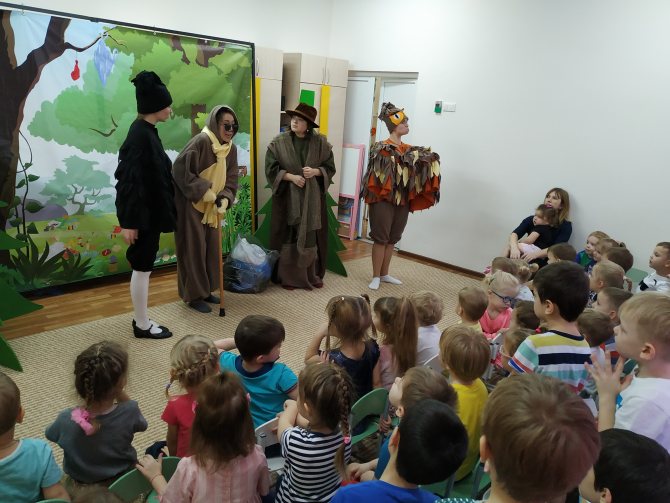
Eco-lessons and eco-performances
Daria Sycheva, coordinator of the Clean Environment project (Krasnodar), told us how they conduct eco-lessons in schools and eco-performances in kindergartens.
A year and a half ago we started teaching eco-lessons. Initially, it was an hour-long lecture that provided basic information about waste management practices, pollution issues, and zero waste lifestyle. We are currently conducting a series of three eco-lessons, at each of which we examine these topics in detail. Each lesson has a cartoon or short video. As a rule, they are filmed with humor, this interests the children. Dialogue mode helps them reason and think about problems and possible solutions.
For the little ones, we have in our arsenal the play “The Earth is Our Common Home!”, which we stage in kindergartens and primary grades. Actors in bright costumes of forest animals playfully tell how to handle waste. In the story, children, together with Tourist, Lesovichok, Crow, Mole and Owl, save the forest from pollution. For our city, this is a unique format for communicating with preschoolers on environmental topics.
We maintain further contact with teachers, educators, and parents. One of the mothers said that after the performance, for a week after the performance, the game “What can be buried in the forest and what cannot” was popular at home. Some children delve into the topic and write essays, while others talk about the shopping bag they started after the lesson. In one class, the children were so inspired that they sewed eco-bags from leftover fabric and went to kindergarten to conduct their own eco-lesson for the little ones.
The point of our eco-lessons and performances is not to scare the children, but to talk about the situation and make it clear that everything is in our hands, that helping the planet is not at all difficult.
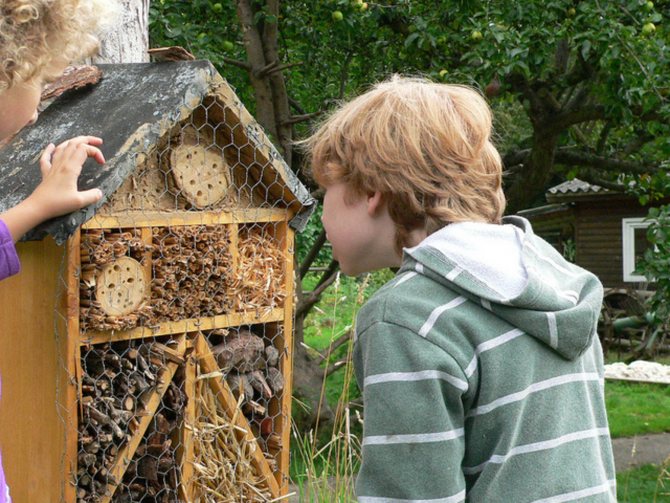
Conversations about ecology in the family
In the family, children receive the most applied knowledge and form an attitude towards the environment. Therefore, parents must lay the foundation of environmental awareness. This does not require any pedagogical techniques; personal example works most effectively. Here are a few actions that will clearly show how to take care of the planet. It is important to do everything together with the child.
- Buy or sew a shopping bag.
- Distribute raw materials to collection points. This can be done in a travel game format.
- Give your child a nice, non-plastic water bottle to take to school.
- Make a bird feeder and hang it in the nearest square/park. Don’t forget to take grain on your walks to replenish the bird’s food supply.
- Fix a broken item or give a second life to an unnecessary one.
- Organize a family cleanup and collect trash near your home.
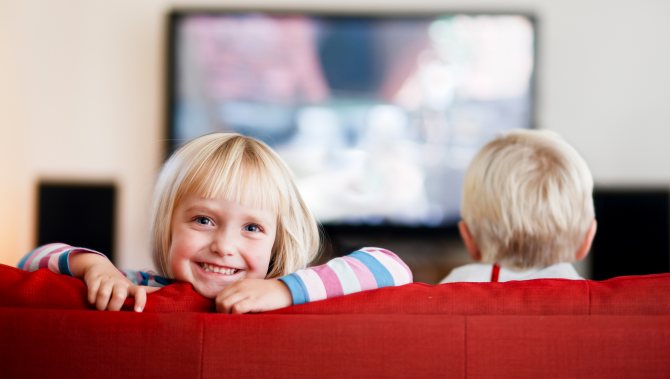
Cartoons on eco-themes
For home conversations on eco-topics with the little ones, you can use the following cartoons:
What is ecology?
Saving resources
What does ecology teach?
Separate collection
Ocean Pollution
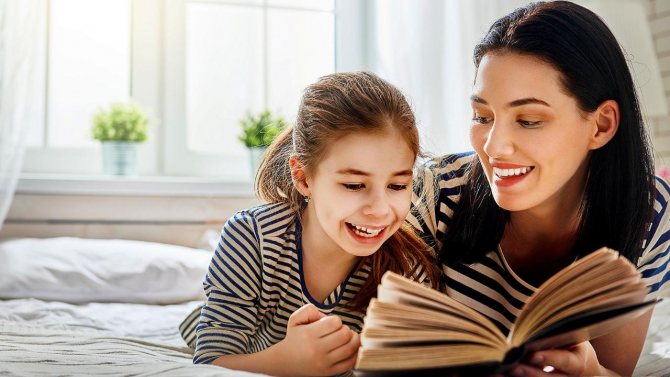
Books on eco-themes for children
For a bookshelf for junior schoolchildren, you can choose:
A. Pleshakov “Green Pages”
A book for primary schoolchildren, dedicated to the nature of their native country and native land, contains stories - pages. They introduce you to the amazing natural diversity - from the grass at the doorstep to birds and animals. Particular attention is paid to revealing environmental connections in the surrounding world.
E. Fyvie “Garbage revolution. A double-edged battle"
Over the past decades, the world has become very complex. Every day, many discoveries occur in all areas of science and technology, which not only children, but also many adults cannot keep track of. But each discovery entails certain consequences for the environment and the planet as a whole. Have you ever wondered what happens to the trash we throw away every day? Where does the garbage truck go and what happens to the chocolate wrapper after you throw it in the trash? Most often, we simply throw away unnecessary things, thereby polluting the environment more and more. But sometimes the world can be changed for the better just by changing your habits.
A. Maho “Gerda. The story of one whale"
Gerda is a little whale. She lives in the endless ocean with her whale parents and brother Lars. One day a terrible thing happened - the whale’s family fell into the hands of whalers, and Gerda was left completely alone. The brave whale decides to find his relatives at any cost and sets off on a dangerous journey - into the waters of the far north. Along the way she will make new friends - killer whales, penguins, seagulls and even a great polar bear. Will Gerda find her family? This is the story of how the little whale Gerda found out what a wonderful world she lives in and found a home.
A. Mitskevich “Asya and the plastic world”
The book “Asya and the Plastic World” will tell you about the importance of environmental problems and the need (even mandatory) to solve them: It will help you gain self-confidence - even a child will understand that he can preserve the environment; Explains how to solve problems with plastic use at different levels (including at the individual or family level); Will inspire readers with personal example and enthusiasm for eco-deeds.
Subscribe to our channel on Telegram! t.me/recyclemagru
Raising an ecological culture for children of senior preschool age
Ecological culture is defined as the degree of children's perception of the environment. Eco-culture also includes the child’s belonging to this world, the child’s assessment of himself in wildlife, in the world.
Now that there is a global environmental crisis, familiarization with nature and the surrounding world must begin in childhood. And it turns out that environmental culture among preschoolers is simply necessary in the current situation in the world.
Environmental literacy of children is as follows. Children should perceive themselves as part of the universe. They must understand that man and nature are interconnected. Man cannot live and exist without nature. Human communication with nature is very valuable, and children should know this. Nature also depends on how people take care of it. Everyone should learn to preserve nature. Children should not only know, but also want to take care of nature. If necessary, children should be able to care for living objects. Every preschooler needs to develop basic environmental protection skills. Preschoolers can learn to anticipate the consequences and results of their actions in nature.
It is useful for students to explain what the environmental problem is. Talk about how people often thoughtlessly pollute the environment. Wrong and thoughtless actions can cause irreparable harm to the entire planet Earth. Children should know about this. Children's ideas about the factors of pollution will help them understand the harm of such incorrect behavior. The preschool educational institution is designed to educate a thrifty person of the future.
Features of the environmental development of older preschoolers and the formation of a correct attitude towards nature will have a beneficial effect on the comprehensive development of the child’s personality. After all, the formation of an ecological culture will give moral and aesthetic satisfaction along with other qualities.
Goals and objectives of environmental education
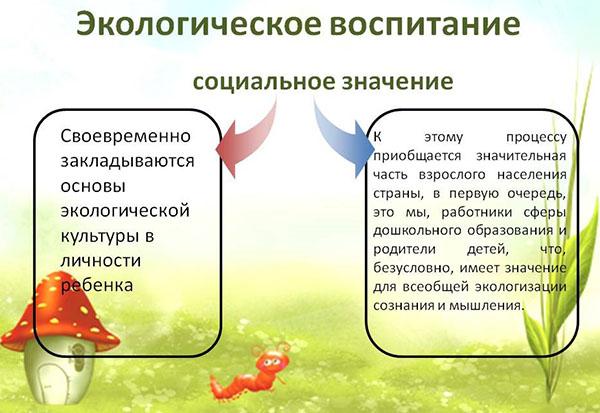
And all this is the result of the irrational and merciless use of natural resources, which do not have time to recover. Articles on the topic
- How to raise your son to be a real man: the main truths 08/24/2021
- How to raise a successful child: 10 effective tips 07/12/2021
- Parenting techniques: how to change a child’s views and behavior 05.26.2021
- Functions of education in the formation of personality 05.26.2021
To prevent further destruction of nature, environmental education of preschoolers, schoolchildren, students and even adults who have not previously been instilled with the basics of environmental culture is necessary.
It is important to teach a child to respect nature and appreciate it as early as possible, while explaining why this is necessary. Most of this work is carried out by workers in preschool institutions, where children spend most of their time. An important fact is the involvement of parents, grandparents, brothers and sisters in this process. This way, a large number of people of different ages will be involved in the problem of environmental conservation.
The main goal of environmental education is to form in preschoolers and schoolchildren a humane attitude towards nature and its resources, to create a personality that is able to understand and realize the fact why it is important to love and protect nature in all its diversity. Perceive yourself as a part of the surrounding world, capable of creating material and spiritual values based on natural resources.
The child must understand that he can actively interact with nature in such a way as to create new benefits without destroying the beauty of the world around him.
Over many years, sufficient theoretical and practical material has been accumulated on the environmental education of preschool and school-age children.
For this purpose the following tasks are set:
- fostering a caring attitude towards the world;
- formation of environmental consciousness;
- developing interest in nature;
- directing children's active efforts to preserve natural resources.
To solve these problems, they use ecological moments, nature excursions, various experiments, educational games, living corners, and winter gardens.

